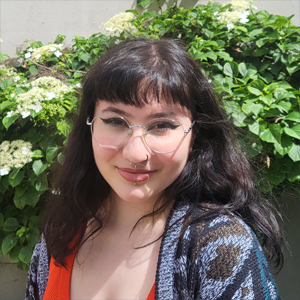New mass spectrometry tool accurately identifies bacteria
Scientists identify bacterial species by analyzing their proteins using mass spectrometry, or MS. This technique first fragments proteins into smaller peptides using an enzyme called trypsin. These sequences can then be compared to references in databases. The largest MS-based studies on bacteria have focused on just a handful of species, so a team of researchers recently created a resource for mapping data onto a more diverse population of bacteria.

Miriam Abele, Armin Soleymaniniya and colleagues at the Technical University of Munich developed MS2Bac, a software system that enables bacterial identification from protein data. They published their resource in Molecular & Cellular Proteomics. MS2Bac maps tryptic peptides onto reference bacterial species or strains, achieving almost perfect accuracy for species identification. To develop this tool, the team first performed MS on the proteins from over 300 bacterial species to create a reference database. They also compared their identification method with other approaches, such as Fourier transform infrared spectroscopy, and found that MS2Bac was the most accurate.
MS2Bac can also identify specific proteins, antibiotic resistance markers. It covers many hypothetical proteins, which are not well understood, providing a basis for further functional studies. This is the first study to incorporate single-cell organisms into the ProteomicsDB database, a proteomics resource for multiomics analyses. This tool will greatly help researchers and clinicians determine bacterial species from clinically and environmentally relevant samples.
Enjoy reading ASBMB Today?
Become a member to receive the print edition four times a year and the digital edition monthly.
Learn moreGet the latest from ASBMB Today
Enter your email address, and we’ll send you a weekly email with recent articles, interviews and more.
Latest in Science
Science highlights or most popular articles

Bacteriophage protein could make queso fresco safer
Researchers characterized the structure and function of PlyP100, a bacteriophage protein that shows promise as a food-safe antimicrobial for preventing Listeria monocytogenes growth in fresh cheeses.

Building the blueprint to block HIV
Wesley Sundquist will present his work on the HIV capsid and revolutionary drug, Lenacapavir, at the ASBMB Annual Meeting, March 7–10, in Maryland.

Gut microbes hijack cancer pathway in high-fat diets
Researchers at the Feinstein Institutes for Medical Research found that a high-fat diet increases ammonia-producing bacteria in the gut microbiome of mice, which in turn disrupts TGF-β signaling and promotes colorectal cancer.

Mapping fentanyl’s cellular footprint
Using a new imaging method, researchers at State University of New York at Buffalo traced fentanyl’s effects inside brain immune cells, revealing how the drug alters lipid droplets, pointing to new paths for addiction diagnostics.

Designing life’s building blocks with AI
Tanja Kortemme, a professor at the University of California, San Francisco, will discuss her research using computational biology to engineer proteins at the 2026 ASBMB Annual Meeting.

Cholesterol as a novel biomarker for Fragile X syndrome
Researchers in Quebec identified lower levels of a brain cholesterol metabolite, 24-hydroxycholesterol, in patients with fragile X syndrome, a finding that could provide a simple blood-based biomarker for understanding and managing the condition.

